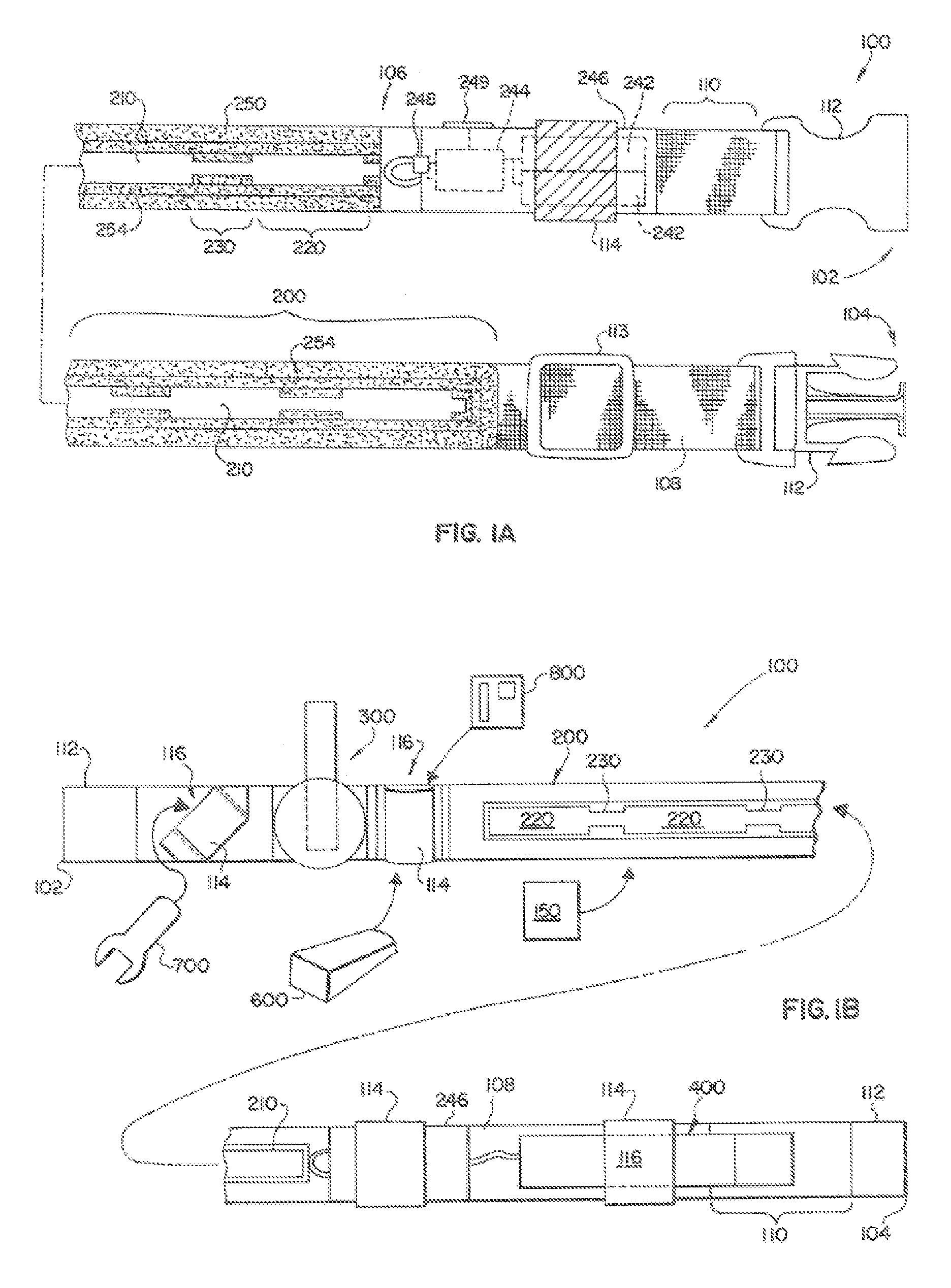Conspicuity devices and methods
a technology of visible devices and devices, applied in the direction of fastening devices, lighting and heating equipment, lighting support devices, etc., can solve the problems of limited utility of passive devices, cumbersome power supply attachments that frequently accompany, and the size of devices, and achieve the effect of significant visibility
- Summary
- Abstract
- Description
- Claims
- Application Information
AI Technical Summary
Benefits of technology
Problems solved by technology
Method used
Image
Examples
example i
Spectral Energy Distribution of Lamp
[0139]Light may be precisely characterized by giving the power of the light at each wavelength in the visible spectrum. The resulting spectral power distribution (SPD) contains all the basic physical data about the light and serves as the starting point for quantitative analyses of color. The SPD can be measured by a spectrophotometer.
[0140]The spectral energy distribution of an exemplary embodiment of a lamp 200 made in accordance with the teachings herein was tested to determine its spectral energy distribution by an independent lighting testing laboratory. The spectral distribution test was performed with an input voltage to the inverter 244 of about 2.85 V(DC), an input current of about 144 mA (DC) an input power of 410 mW. A complete assembly with an encasement 250 was tested, having lens layer 270 in place. To perform the test, the following equipment was used by an independent testing laboratory: (i) a Xitron 2503...
example ii
Light Output of Lamp
[0151]It is believed that the above conclusions are bolstered by the fact that the intensity of the light output of lamp 200 is low, yet surprisingly visible. In actual use, lamp 200 has very little glare and is not blinding, even at very close distances (e.g., six inches). Yet, lamp 200 is still highly visible in dark smoky environments that do not permit a firefighter to see their hand in front of their face.
[0152]The light output of an exemplary lamp 200 was tested to quantify the intensity of the output. The testing was performed by an independent laboratory. Lamp 200 was attached to tool band 100 and centered at the front of a helmet. The helmet, in turn, was positioned in a testing jig adapted and configured to measure the light intensity put out by the lamp 200 at various points of an imaginary “sphere” surrounding the helmet. The element 210 of the lamp 200 was centered at the “equator” of the imaginary “sphere” at 0 degrees longitude on the sphere (e.g.,...
PUM
 Login to View More
Login to View More Abstract
Description
Claims
Application Information
 Login to View More
Login to View More - R&D
- Intellectual Property
- Life Sciences
- Materials
- Tech Scout
- Unparalleled Data Quality
- Higher Quality Content
- 60% Fewer Hallucinations
Browse by: Latest US Patents, China's latest patents, Technical Efficacy Thesaurus, Application Domain, Technology Topic, Popular Technical Reports.
© 2025 PatSnap. All rights reserved.Legal|Privacy policy|Modern Slavery Act Transparency Statement|Sitemap|About US| Contact US: help@patsnap.com



